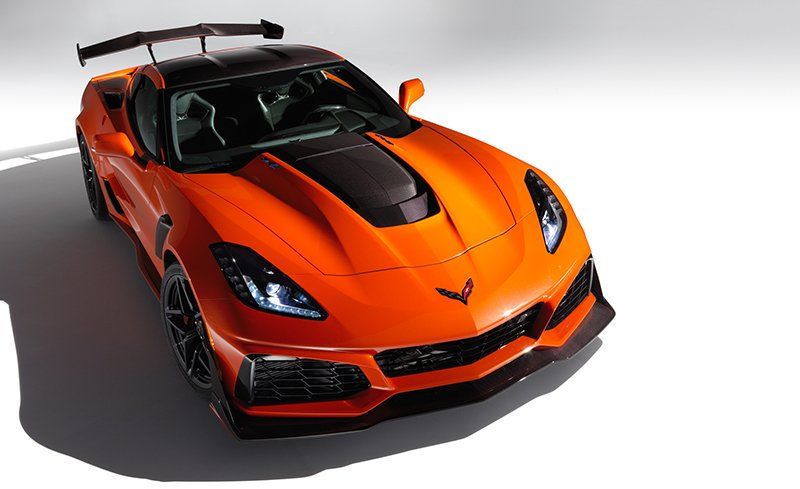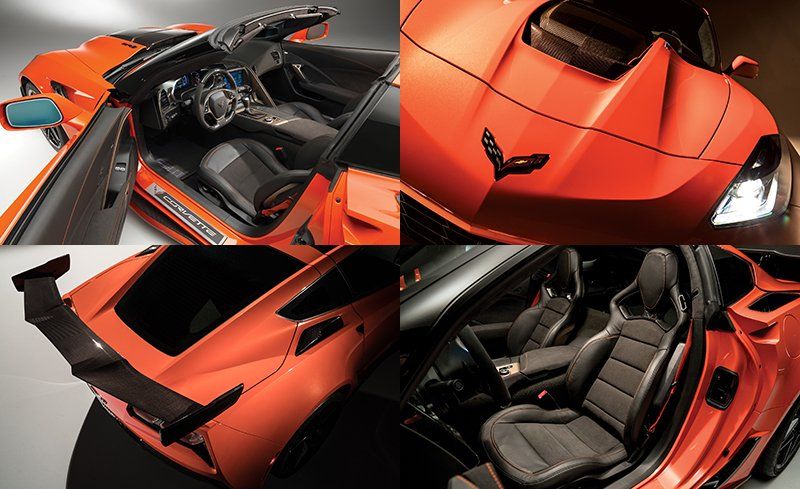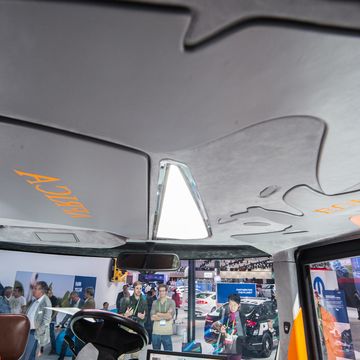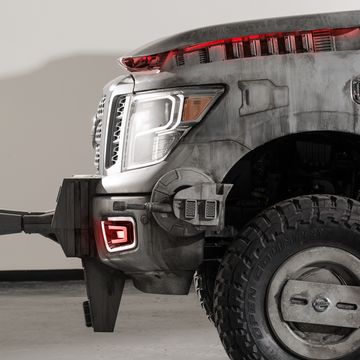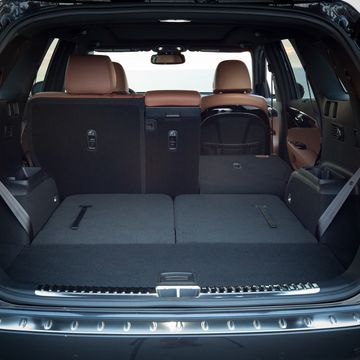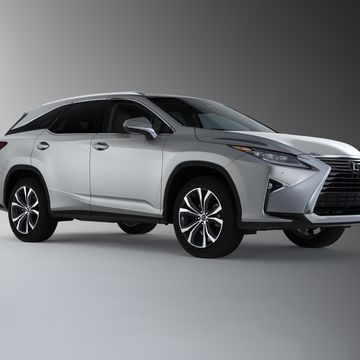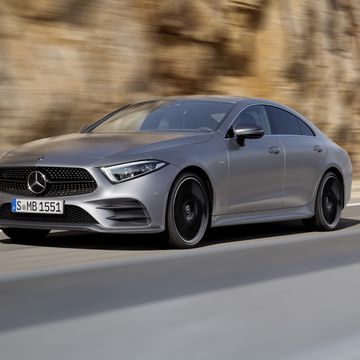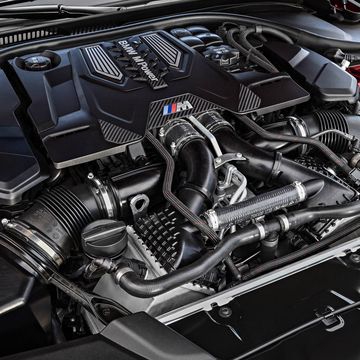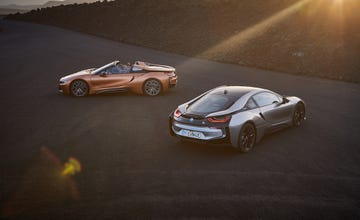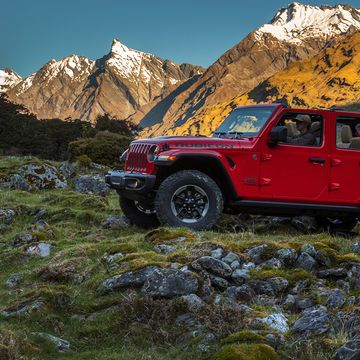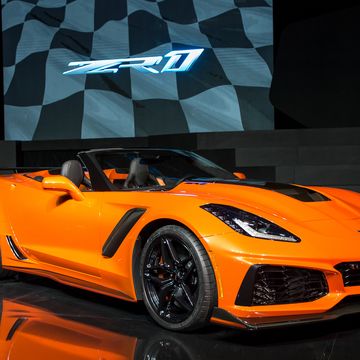There’s no pretending anymore that a tectonic shift isn’t on its horizon, but the Chevrolet Corvette as we know it is still evolving as if it’s in a time-lapse video. In 2013, the Z06 was a 505-hp middle manager toiling in the shadow of the supercharged ZR1; just a generation later, it outearns its former boss with a 650-hp blown LT4, establishing itself as the greatest performance value of all time. At Virginia International Raceway for our annual Lightning Lap track extravaganza, the current-generation Z06 fell short of an $875,000 limited-production hypercar by only a second and a half—at a savings of some three-quarters of a million bucks. It’d be pretty easy to make a Z06 faster with another $775,000.
Or you could let Chevy do it for you at a significant discount. Final pricing for the 2019 ZR1 isn’t settled, but expect it to track the C6-generation ZR1 and start just above $120,000 when it reaches dealers in spring 2018. It’s not wrong to think of the ZR1 as a Z06 with more. Both have supercharged engines, and aside from that, their drivetrains—either the seven-speed manual or the eight-speed automatic—are the same right down to the gear ratios. Suspension differences are limited to tuning. There are no fancy spool-valve shocks here as there are on a Camaro ZL1 1LE; as with the Z06, the ZR1 uses magnetorheological dampers. The ZR1’s front wheels are a half-inch wider, changing the tire’s shoulder geometry, but its standard and optional rubber are the same pieces Z06 buyers get, and the ZR1’s brakes are the Z06’s optional rotors and calipers with new pads.
But the ZR1 is precisely one step beyond just “more.” Longtime Corvette chief engineer Tadge Juechter describes the ZR1 as “the most we know how to do.” Here, the most means 755 horsepower and 715 lb-ft of torque. And it starts, as it did in 1990 on the first ZR-1 that most people remember, with an engine called LT5. With pushrods instead of its ancestor’s dual overhead cams, though, this LT5 is an evolution of the 6.2-liter LT4 powering the current Z06. Like the Z06’s engine, this one is capped by an Eaton supercharger. The blower is bigger than the LT4’s, pumping 52 percent more air with each revolution, and taller by 2.9 inches. Corvette exterior design manager Kirk Bennion says that, when the design team tried to maintain typical hood clearances, “you got behind the wheel, and you couldn’t even see the right side of the car.” Faced with this difficulty, his team decided to stay home.
Stay home from Europe, that is. Forgoing European sales and ignoring the Continent’s rulebook meant not having to meet its stringent pedestrian-protection regulations. In Europe, the head of anybody who steps in front of a moving car is entitled to smash through a minimum amount of (relatively) soft material and space before contacting hard engine parts such as intake manifolds, superchargers, or intercooler bricks. Here in the U.S.A., we have thicker skulls—perhaps related to an above-global-average dairy intake—and our regulators will let you bonk your noggin on an engine that sticks up through the hood. The largest chunk of that carbon-fiber strip running down the center of the ZR1’s nose is, in fact, the intercooler cover. As Juechter describes it: “You’ve got no air gap between the engine and the hood, you’ve got no hood blanket, you’ve got no construction between the hood inner and outer. All that stuff usually stacks on top [of the engine], but we consumed all of that and then let the engine crawl out another inch, inch and a half.” Adds Bennion: “It was a challenge to get that hood right. It could get real backwoods on you real fast.”
While you can now see the right side of the car, the view from the driver’s seat is still plenty dramatic: Luke Skywalker’s as he zooms down the trench toward the Death Star’s exhaust port. And, Juechter promises, it’s even more dramatic when you start the car. “[The engine] moves around on you. You step on it, you can see the engine trying to pick the front of the car up and come out of the hole. Every twitch of your foot, you can see how the driveline is moving. It’s part of the charm.” In much the same way a great white chomping on the bars of your dive cage is part of the charm. We’re also told the LT5 will shoot flames from its exhaust, so there’s even charm for the people behind a ZR1.
That last bit is a conveniently bad-ass byproduct of the engine’s new fuel-delivery system, which uses both port and direct injection. At the other end of the combustion cycle, there’s another benefit to Corvexit: louder exhaust. U.S. pass-by noise regulations allow more decibels than do the European Union’s. In addition to the electronically controlled butterfly valves in a Z06, the ZR1’s exhaust system incorporates a newly patented internal valve that Juechter likens to the flap on top of a semitractor’s exhaust pipe. A spring holds it closed under light loads, but as exhaust flow grows more urgent, it overcomes the spring pressure and pushes the valve open, allowing for a smoother rise to the volume than the all-or-nothing character of the butterfly valve alone.
Beyond the larger supercharger and the fuel-injection system, the biggest differences between the LT4 and LT5 are the latter’s larger throttle body and strengthened crankshaft. Even with the computer dialing back the torque output in the lower gears, Chevy figures the ZR1 will hit 60 mph in less than three seconds, clear the quarter in less than 11, and top out beyond 210 mph. Juechter says: “Some companies, when they go up in horsepower, what they’re really doing is just extending the torque curve . . . the peak torque isn’t higher at all, it just extends a little bit. We’ve elevated the torque across the range. It feels stronger than a Z06 all the way through the gear run-up, not just a little extension at the end.”
“If you’re going to engage in an endeavor like this,” adds Tom Peters, “you need that noticeable transition or contrast. You know a customer is going to expect it.” As design director for performance cars at General Motors, Peters shouldered much of the responsibility for the other half of the ZR1’s story: aerodynamics. Aside from the rear wing and different wheels, the Z06 and ZR1 are identical aft of the A-pillars. Forward of them, no bodywork is shared, and engineers crammed an additional four heat exchangers into the nose. Each outboard nostril contains a new radiator and intercooler. The two intercooler bricks underhood are enlarged to twice the size of the LT4’s. The ZR1’s larger blower and additional coolers add some 140 pounds to the Z06’s curb weight, most of it concentrated in the nose. A chief collaborator on the ZR1’s styling was air. Maximizing airflow through all those exchangers meant extensive wind-tunnel development, using both scale models and full-size cars in a rolling-road wind tunnel. “We see aerodynamics as an opportunity to make the car more unique, more pure and genuine,” Peters says. “To me, that’s universal truth, and that’s design.”
Not all ZR1s will wear as extreme an aero or color package as the car in these photos. This one is fitted with the ZTK Performance package, which includes Michelin Pilot Sport Cup 2 rubber, specific tuning of the magnetorheological dampers, and that mondo wing. A smaller one is standard. This car is also wearing the Sebring Orange Design package, which brings the blazing hue to the brake calipers, rocker panels, seatbelts, interior stitching, and stripes on the splitter. The ZTK wing offers 10 degrees of adjustability and generates a claimed 950 pounds of downforce at top speed. That’s more than the Z06’s wicker bill generates, and it’s a vastly more efficient way of making downforce, which explains how the ZR1 can tack another 25 or so mph onto the Z06’s top speed.
“You see a lot of poseurs out there who just bolt the wing to the hatch, so it goes up with the hatch,” Juechter notes. “But if you’re generating true downforce, like epic quantities of downforce, you can’t route that through the hatch. You’ll crack it.” So his wing mounts aft of the hatch opening, where two aluminum castings tucked inside the fascia tie into the back of the car’s composite tub and transmit that load down to the bumper beam. He demonstrates the sturdiness of the setup by yanking on the wing with both hands, which shakes the whole car.
ZR1s without the ZTK Performance package will have the same carbon-fiber front splitter as the car shown here, but the ZTK adds spindly vertical end plates that owe their toe-lopping thinness to the decision to stay out of Europe. According to Juechter, the EU’s pedestrian-protection rules mandate “very doughy radii” on such pieces. Why two different aero packages on such a low-volume model? “We wanted to have the aerodynamic performance for our top-level track car,” he explains, “but we also wanted to have a car that people could drive to the country club and put their golf clubs in the back.” Or, for that matter, stow the removable roof panel. That big wing is going to complicate loading and unloading.
The ZR1 might be the ultimate track Corvette, but its creators don’t see it as being the craziest. That title still belongs to the Z06. Their goal with the ZR1, Juechter says, is “to have the performance accessible, to have people who are not necessarily professional drivers be able to get into and experience a 750-hp car and be able to get close to its limits and feel comfortable doing it.”
To that end, the springs, dampers, and electronically controlled limited-slip differential are all calibrated to be forgiving. Unlike the positively brutal Camaro ZL1 1LE, the ZR1 is a “have your cake and eat it, too” kind of car, according to Juechter—a high-powered grand tourer. It will still be faster than the Z06, of course. Chevy’s team uses a different track configuration than we do for Lightning Lap but says the ZR1 laps VIR 2.5 seconds quicker than a Z06. If we can replicate that performance on the longer Grand West Course, the ZR1 should set a new Lightning Lap record.
It seems that Chevy is gunning for a sales record with this ZR1 as well. We’ve seen spy photos of ZR1 convertibles in addition to the coupes, so it appears that this generation will be available in all the flavors of the regular Corvette lineup. Regardless of transmission or body style, the ZR1 promises to run away from more expensive machinery on a racetrack for a fraction of the price. No matter how much the Corvette might change, that’s one thing that never will.

Jared Gall started his career with Car and Driver as an unpaid intern, but has now worked here more than half of his life. He has held numerous positions within C/D's digital and print teams and has driven some 2500 cars. Employee records indicate that he is the only staffer ever to T-bone a school bus with another school bus.


